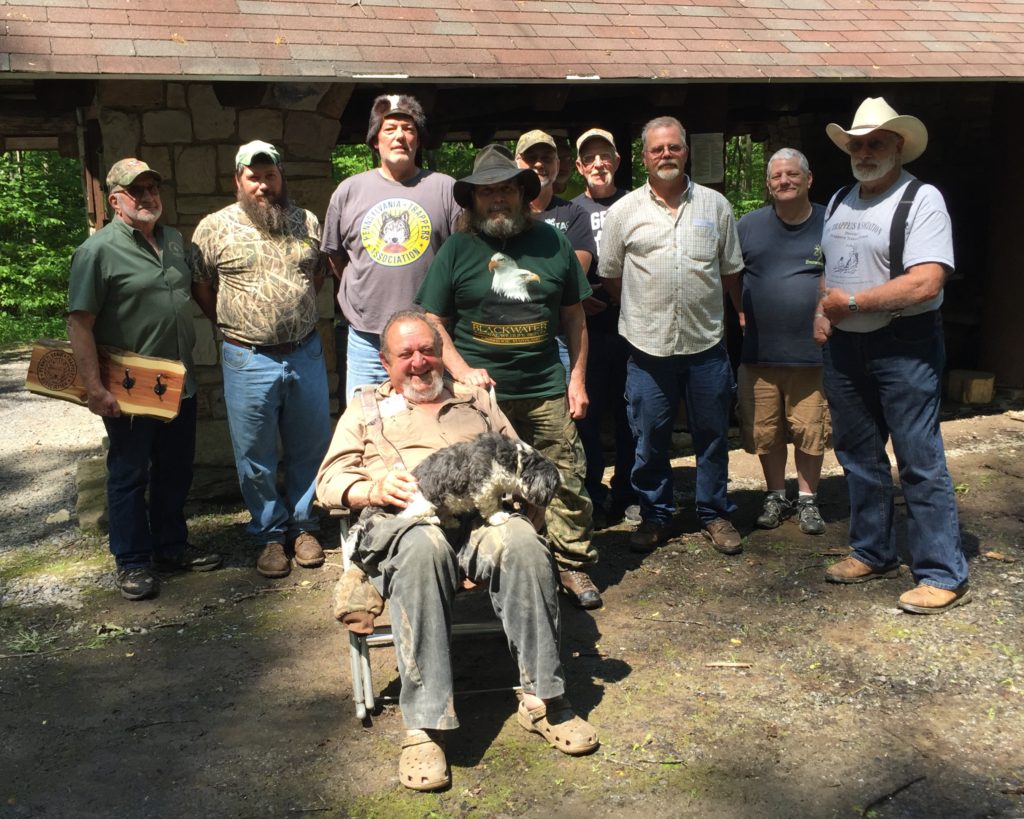MEASURE MORE CLEARLY DEFINES SNARE LOCKS
Trappers now have more direct guidance on the types of locks that can be used on snares.
The Pennsylvania Board of Game Commissioners today adopted a measure that requires snares used to capture beavers and otters to be equipped with approved locks, which already had been required for cable restraints used to capture foxes and coyotes.
Previously, the law required a snare be equipped with “a mechanical sliding metal release lock.”
The change, which was recommended by the Pennsylvania Trapper’s Association, intends to expand the number and types of locks available to trappers using snares, and create consistency in the legal lock requirements for cable restraints and snares.
The change also allows for use of cage or box traps for taking furbearers.
The approved cable-restraint locks that would also apply to snares are: the Reichart 180-Degree Reverse Bend Washer; Kaatz Relax-a-Lock; Berkshire 90-Degree Bend Washer; Micro Lock; BMI Slide Free Lock; and Penny Lock.
The list of approved locks is based on research conducted during the development of the Best Management Practices for Trapping in the United States.





D9: Bradford County Fair
District 9’s display at the Bradford County (Troy, PA) Fair.
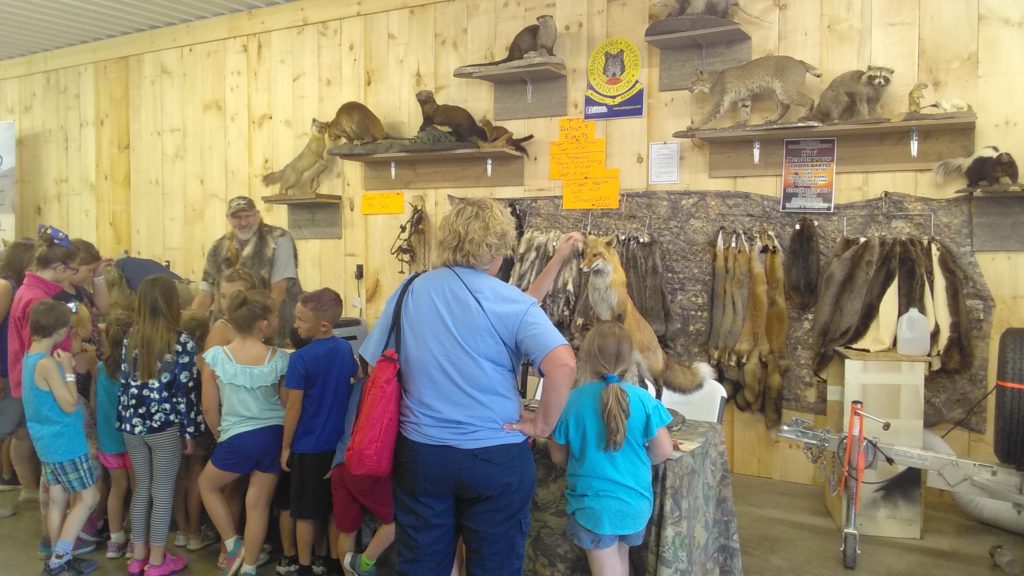
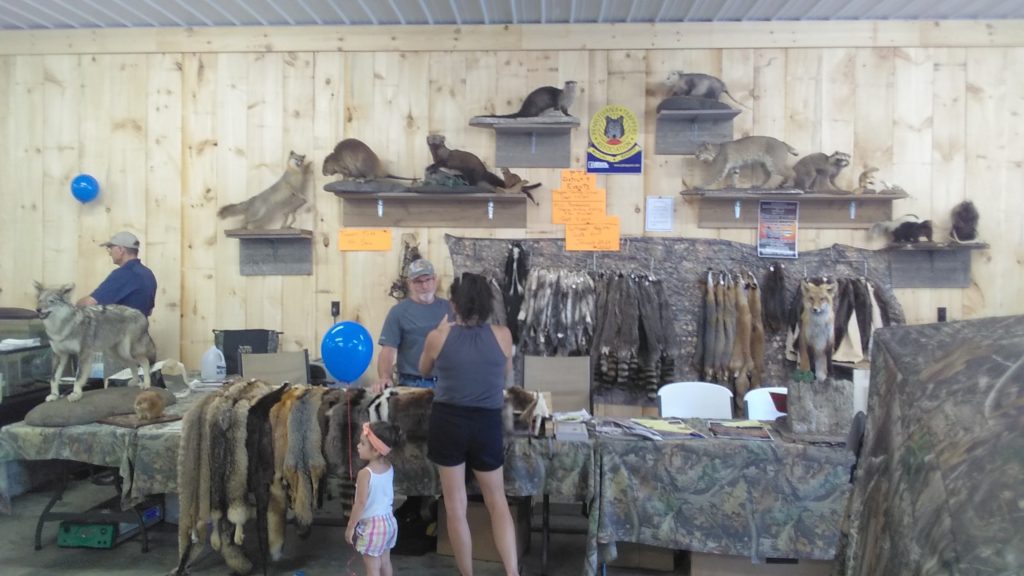
Photo Contest Winners
First Place: Jason Wagner
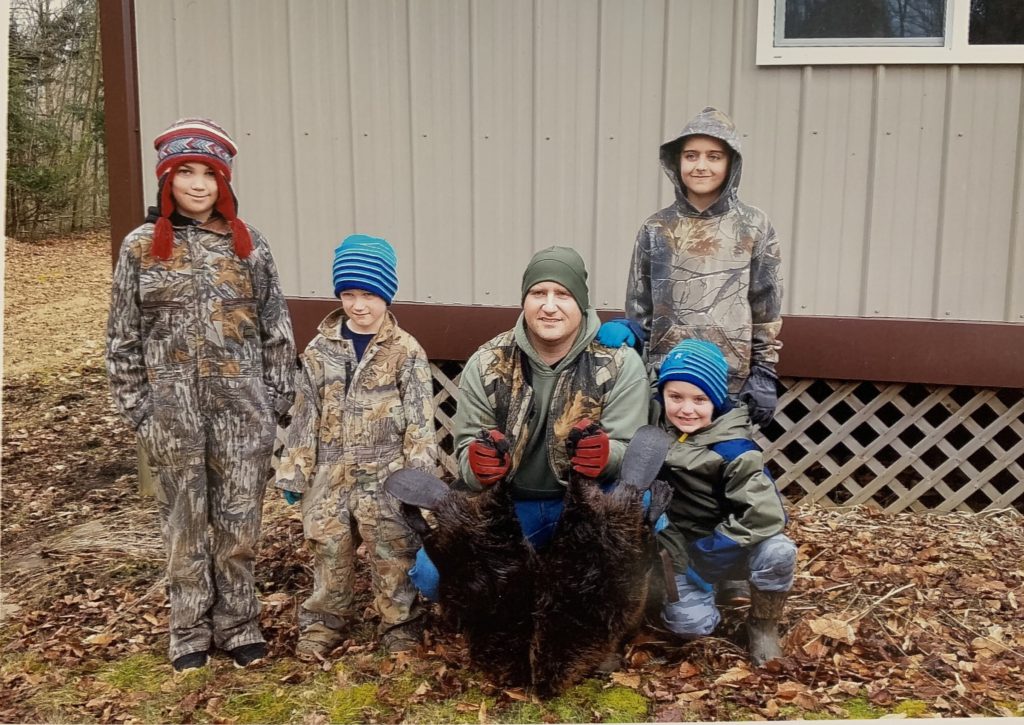
Second Place: Tyler Wagner
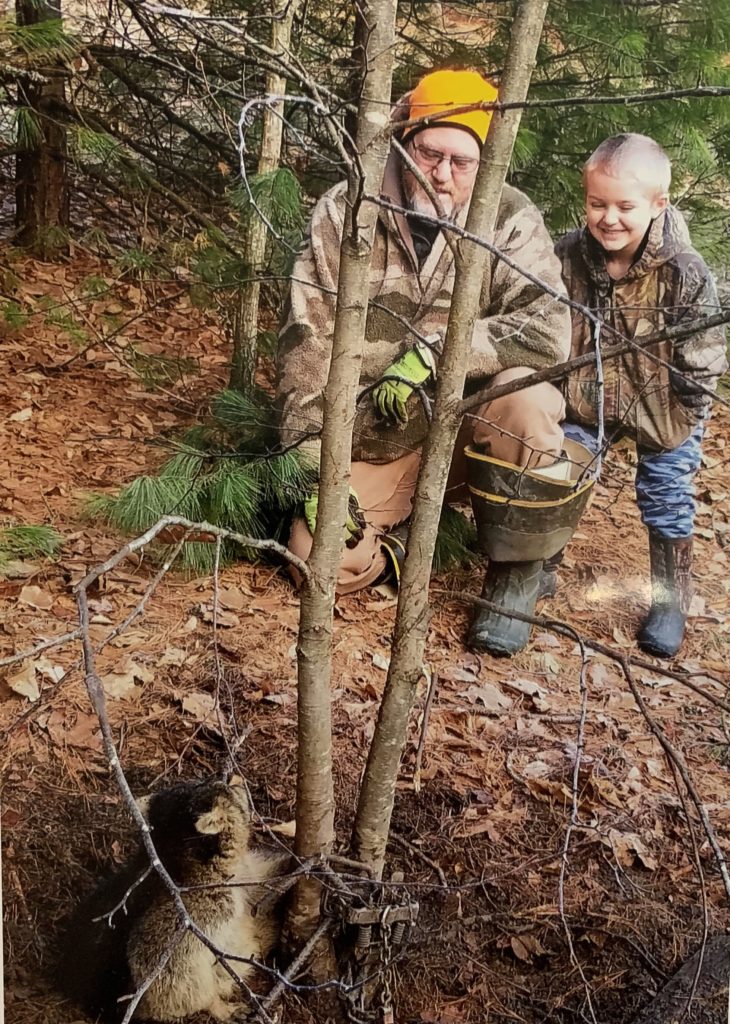
Third Place: Adam Wagner
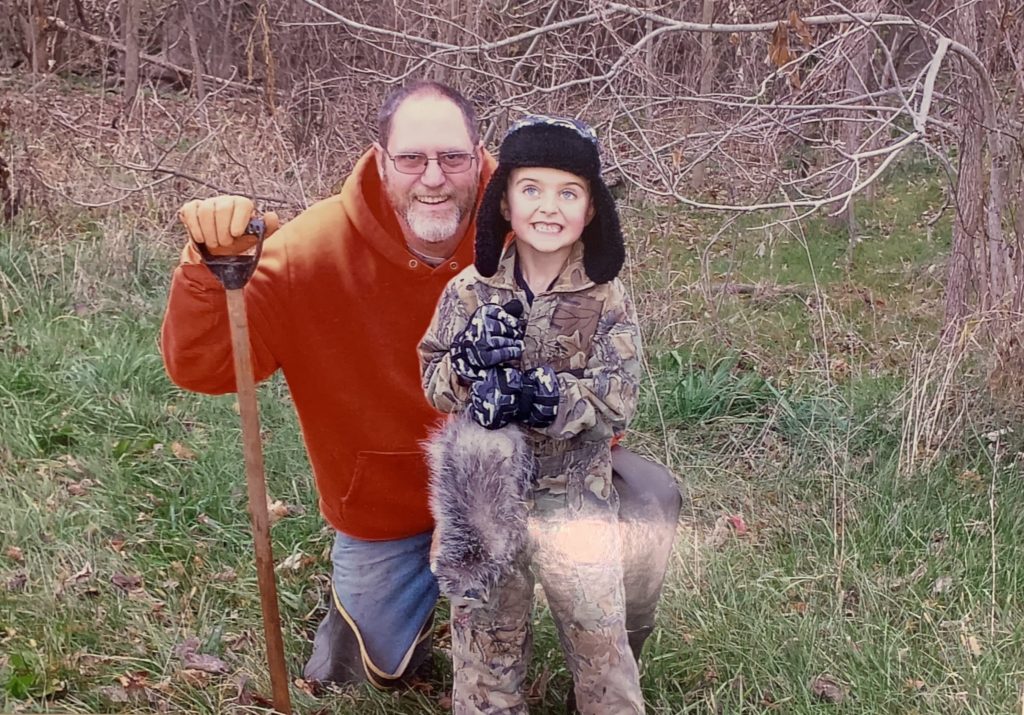
New Furs for Miss PA
District #12 Director Steve Senn and Dave Rodgers at the Miss PA event last evening with the newly crowned Miss PA and Miss PA Outstanding Teen. It looks like they love their mink coats!
D8: Youth Field Day
Sat June 8 at the Waynesboro Fish and Game clubs Youth Field Day. D8 members Frank Mong and Eric Woy were doing the program on trapping.

Mange Samples Still Needed
As part of a larger study on sarcoptic mange in Pennsylvania’s black bears, and with the help of many trappers and hunters throughout Pennsylvania, we collected skin samples from 14 coyotes and 5 red foxes with signs of mange this past winter. Mange is caused by a parasitic mite that burrows under the skin and causes a hypersensitivity reaction so severe that it can lead to changes in behavior and movement, weight loss, secondary infections, and even death. Coyotes and red foxes have historically been affected by sarcoptic mange, however the first case of this disease in black bears was only described in 1991 in Pennsylvania. It has since increased in geographic range, incidence, and number of bears euthanized due to this disease. To better understand why mange is now present in PA’s bear population and best management practices for this disease, we are studying differences in host immune responses, mite burden, and mite genetics between canids and black bears. While we have yet to find mites present on a coyote that presents with mange symptoms, we are still able to gather other critical samples for this research. Some of these animals also had samples removed for heartworm and nematode testing. While we have not found any mites on these coyotes, we have found mites on four foxes. Many of the coyotes presented with more mild symptoms of mange compared to the foxes, which may be one of the reasons we were unable to find any mange mites on the coyotes submitted. To better understand the different symptoms observed and difficulties of finding mange mites on coyotes compared to red foxes and black bears, we are taking skin biopsy samples to study the different types of hypersensitivity responses and number of mites observed in different animals and different species suffering from mange.
We also collected a variety of samples including hearts, blood serum, and fecal samples from coyotes and foxes at the Mosquito Creek, Cresson Community, and Sinnemahoning Predator Hunts. We will be using these samples to survey Pennsylvania for heartworm and intestinal nematodes (worms) in Pennsylvania’s canid population. It is important to understand the parasite burden in our wildlife for several reasons. As many of you are aware, these parasites can cause a decline in animal health and body composition- potentially affecting fur quality and obviously affecting animal welfare. This is also important in terms of surveillance of these diseases for other wildlife and for domestic animals. While heartworm can be prevented in domestic dogs (and a reminder to keep your furry friends’ heartworm vaccinations up to date!), it cannot be prevented in wildlife and consequently wildlife serve an important role in disease surveillance.
With the help and support of trappers and hunters in Pennsylvania, we were able to collect samples from a total of 27 coyotes and 14 foxes. These samples are imperative to wildlife disease surveillance and management. We will continue to collect samples from animals with symptoms of mange until March 2020. Please contact Hannah Greenberg if you capture a canid with mange at hsg14@psu.edu or 717-226-7464. Stay tuned as we continue to collect samples and look for answers to these and many more questions on the range of mange in Pennsylvania’s wildlife!
Thank you to all who donated your time and animals to this valuable research!

D5: Trapper Training School
JULY 20, 2019
Where: Laurel Ridge Sportsman Assoc. 2906 Coxes Creek Road Somerset Pa. 15501
Time: 7:30 am Start. Lunch and supper will be provided finish 8:00pm
Contact: Brian Spory 818 Penn Ave. Hollsopple Pa. 15935
Phone #814-244-7717
Cost: $20.00 per person
(includes t-shirt if signed up before July 10,)
What to expect: The school will be open to male and female students of all ages and can be a family event. An adult must accompany children under the age of 12. There will be some indoor instruction. Bring boots, (also waders if you have them), camera, notebook, rain gear, and be ready to learn from District 5 Trappers with years of experience. There will be Water trapping, Land trapping and Species specific trapping shown, just how we do it in the fields and creeks. We have experienced instructors. They will share with you many years of information in a short period of time. They will cover the entire trapping process; types of traps, trap preparation, trapping demonstrations on both land and water sets, skinning, fleshing and getting your catch to the fur buyer or tannery. We will also discuss trapping laws, license and seasons.
——————————————————————————-
Information Required:
NAME:___________________________________________________ MALE_____ FEMALE____
AGE: ________ T-SHIRT SIZE: __________
Mail or email to:
Brian Spory 818 Penn Ave, Hollsopple, Pa. 15935 bspory@atlanticbb.net
Make checks payable to: PA Trappers Assoc. District 5. You may also pay the day of the event.
Donation
Autumn McEntee pictured here with her 2016-17 raccoon catch. She is donating her entire catch to be tanned and made into fur items to raise money for District #8. Autumn would like to challenge all members of District #8 to donate at least one pelt to this worthy cause.
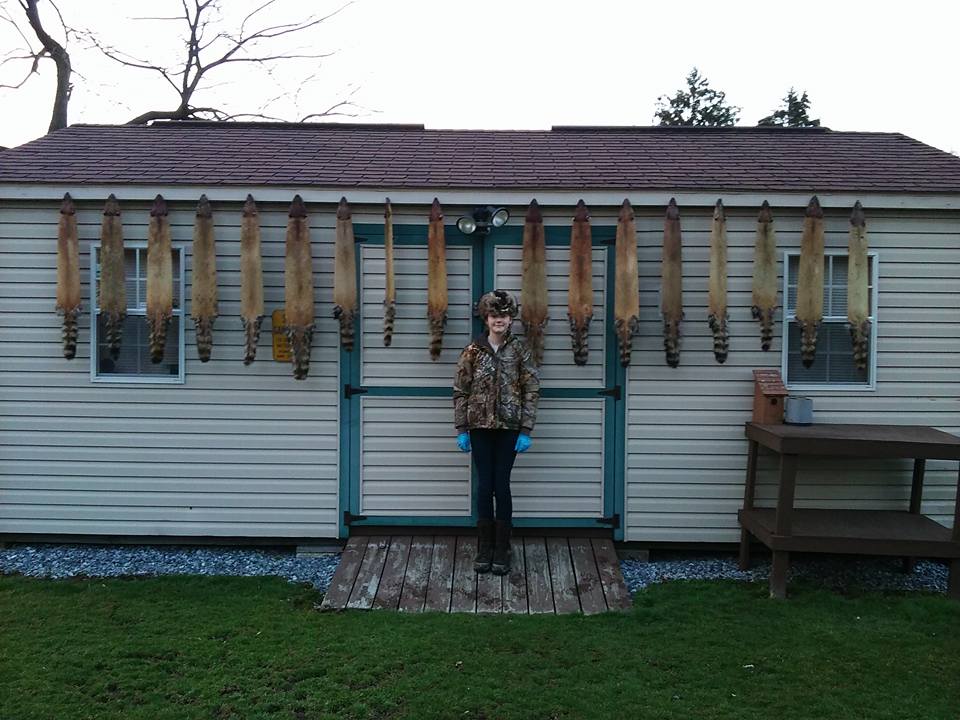
From Miss Teen Rodeo PA 2019
“I am completely in love with my Pennsylvania harvested, raccoon fur vest!”
R and R Trading Post did an amazing job bringing together the pelts donated by the Hohmann’s, Jennifer and her husband Willie, along with the Pennsylvania Trappers Association. I’d also like to thank Witmer’s once again for tanning these hides to prepare them for the sewing process. Reach out to Ryan and Renee for all of your fur needs! From rugs to quiver, moccasins to vests, they’ve got the skills to make it happen!

 rom M
rom M
Then and now…
PTA Big Springs State Park – D8 meeting 2019, PTA Rendezvous 1949

